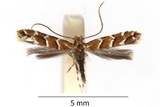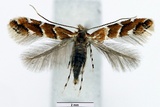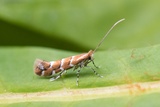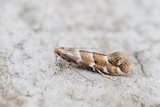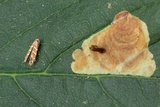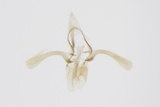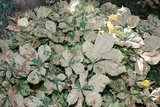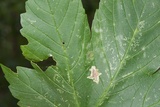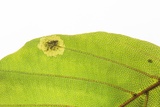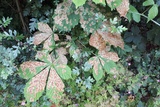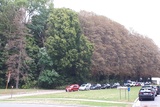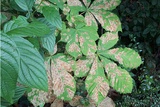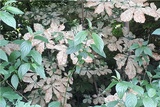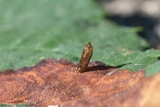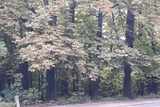Cameraria ohridella Deschka & Dimić, 1986 Species
Last modified: Jan. 31, 2025, 2:40 p.m.
Very common in parks and lanes where Aesculus hippocastanum is planted, causing severe damage. This species was relatively described very late (1986) from SE Europe from where it spread westwards at a speed of ca 200 km per year. It was discovered in Belgium in 1999 at Tervuren (BR) and in the same year searches for the mines in OV and WV were negative.
In 2000, however, the species reached the Belgian coast. After that, the species became spread all over the country and it is sometimes present in huge quantities and is now considered as a pest species.
Details
- Classification
- Family: Gracillariidae > Subfamily: Lithocolletinae > Genus: Cameraria > Species: Cameraria ohridella
- Vernacular names
- Paardenkastanjemineermot (NL), Horse-chestnut leaf-miner (EN), Mineuse du marronnier (FR), Rosskastanien-Miniermotte, Biergartenmotte (DE)
- First mention in Belgium
- De Prins W. & Puplesiene J. 2000. Cameraria ohridella, een nieuwe soort voor de Belgische fauna (Lepidoptera: Gracillariidae). — Phegea 28(1): 1–6. On page 1 (as Cameraria ohridella Deschka & Dimic, 1986). view page
- Status
-
Naturalised In Belgium since November 1999.
First record of some mines on Aesculus hippocastanum in the park of Tervuren on 1999-11-16, leg. J. De Prins. Since then spread all over Belgium and most of the time in large quantities, thousands of mines per tree.
Distribution
Caterpillar
Yellowish white, with on the dorsal side of every segment a small brownish patch.
Mine
First instars make a very short, epidermal gallery on the upper side of a leaf, abruptly widening into a semi-circular blotch, light brown, darker brown at its center.
See also gracillariidae.net and bladmineerders.be.
Bionomics
The larvae cause upperside mines in the leaves of Aesculus hippocastanum with white flowers. In most cases, there are several mines in 1 leaf and from July onwards, some leaves are completely covered with mines causing premature defoliation. Females of the third generation may have difficulties in finding oviposition sites, and in such cases, development can take place on Acer pseudoplatanus.
Pupation inside the leaf mines in a more or less circular pupation chamber. The pupa hibernates.
Adults rest on tree trunks during day time. However, swarms with thousands of specimens were observed in early morning hours during sunny days in July 2000.
Flight periods
There are three overlapping generations per year. The first adults start to appear from mid-March and the species can be observed till well in November.
Observed on
- Host plant (species):
- Aesculus hippocastanum, Fagus sylvatica, Acer pseudoplatanus and Corylus avellana
Mainly monophagous on Aesculus hippocastanum with white flowers. The form with pink flowers is not accepted as a food source. Very rarely also other Aesculus species are infested, like Aesculus flava.
Also occasionally found in Belgium on Fagus sylvatica, Acer pseudoplatanus and Corylus avellana.
